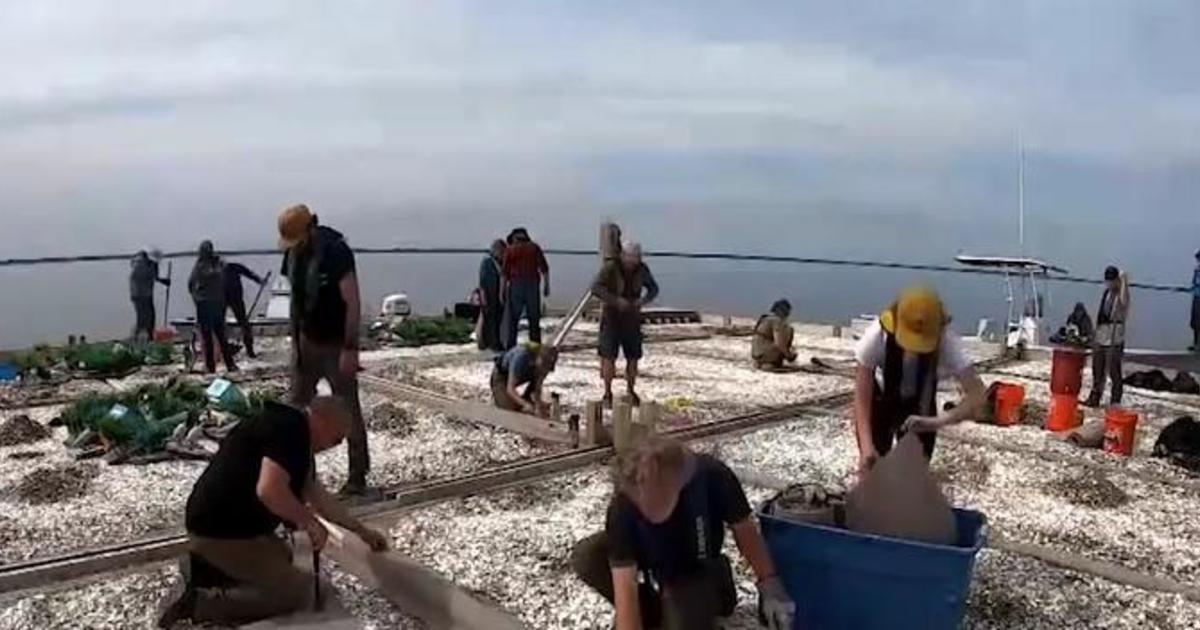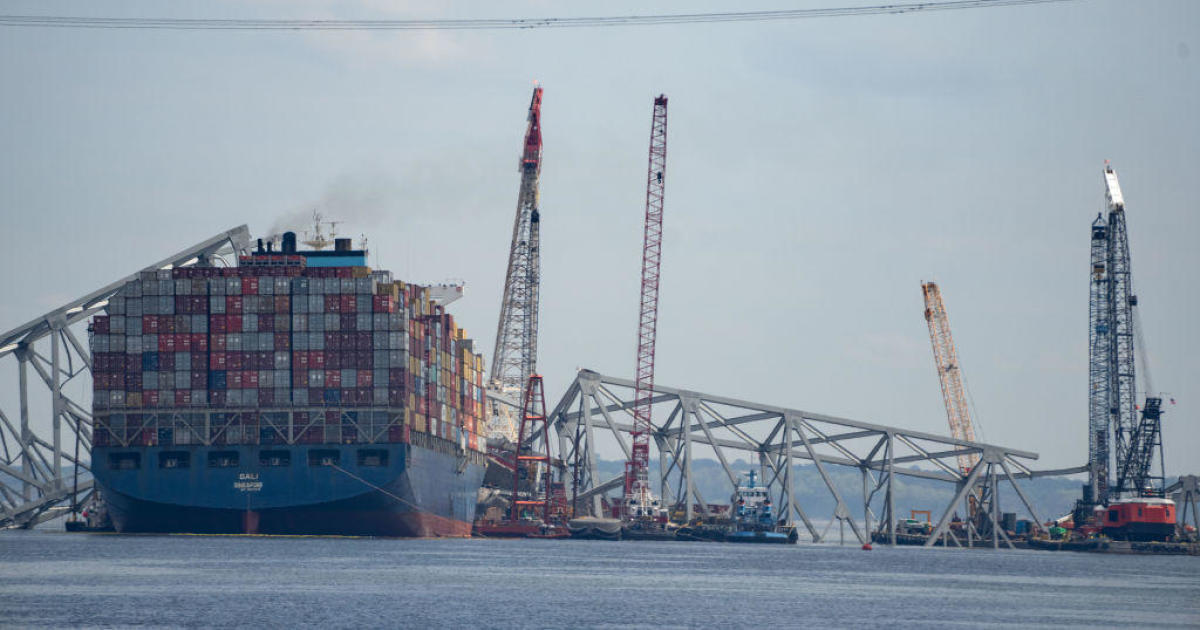Researchers Gauging Sandy's Impact On Chesapeake
SOLOMONS, Md. (AP) -- Across the environmentally fragile Chesapeake, researchers are spreading out to see what Sandy has wrought. So far, the indications are that the impact has not been as great as last fall when a pair of tropical storms caused widespread flooding that dumped mud, debris and sewage into the bay.
River flow, levels of pollutants, salinity and water clarity are among the items being measured in the bay and rivers, creeks and streams that feed the watershed.
On Thursday, five Department of Natural Resources biologists were on the Patuxent River in southern Maryland aboard the research vessel Kerhin, taking water samples up and down the river.
Near the river's mouth, Laura Fabian dropped overboard a black-and-white Secchi disc, which is used to measure water clarity. She palyed out line to see how deep the river was at the spot, unable to see the disc after a few feet.
"Secchi is one, air temp is 12, wind is still west at four to six," she yells out, noting the temperature in Celsius degrees. The samples are measured for clarity, salinity and levels of phosphorous, nitrogen, ammonia and related pollutants.
Upriver at Jack Bay, the salinity levels drop in shallower water and the disc isn't visible after about a foot.
"All of a sudden that fresh water is on top," said Debbie Howard, another DNR biologist on board the Kerhin. "This could be the start of the fresh water that's coming down the Patuxent from the storm."
She holds up a gallon milk jug of water from the surface, noting how much browner it is than water taken from a deeper level in that spot on the river.
The trip is a regularly scheduled monthly sampling cruise of the river that happens to come just days after the storm hit, providing early data on its environmental impact.
The National Oceanic and Atmospheric Administration, meanwhile, says its systems of interactive Chesapeake Bay buoys tracked storm data at 10 locations as the storm passed through. The top wind speed was at the Potomac/Point Lookout buoy at 57.9 mph Monday evening while the maximum wave height was 14.9 feet that morning at the First Landing buoy near the mouth of the bay, NOAA said.
Beth McGee, a water quality scientist with the Chesapeake Bay Foundation, said the high flows that accompanied tropical storms Irene and Lee last fall haven't materialized so far with Sandy. The flood gauge at the Conowingo dam across the Susquehanna River at the head of the bay, for example, crested at more than 30 feet during Irene last fall, but was at about 19 feet during the recent storm, which is below flood stage.
There were concerns that sewage, fertilizer washing off farm fields and other pollution from last year's storms would fuel algae blooms this past summer causing larger dead zones in the bay that have too little oxygen to support life. However, that didn't happen with the second smallest dead zone since 1985, McGee said.
That shows how the timing of storms changes how they affect the bay. It also gives hope the recent storm won't increase the size of the bay's dead zone next year, McGee said.
Heavy flows in the spring and early summer provide nitrogen and phosphorous from sewage, fertilizer and other pollutants just as the days are getting longer and warmer. That's when algae can better take advantage of the nutrients and bloom. When the algae die, they are consumed by bacteria, which consume the available oxygen.
Fall storms also aren't as damaging to bay grasses, which improve water quality and are a key habitat for many species, researchers said.
Bob Orth, a scientist with the Virginia Institute of Marine Science and leader of an annual bay-wide survey of underwater grasses, said his gut feeling was that the recent storm's effect on bay grasses was probably minimal.
The storm hit after the growing season ended, and the fact that Sandy was not as severe in the bay as feared, probably spared the grasses, he said.
"What we saw with Sandy is nothing considering the effects we had with Irene and Lee" where the upper bay was "one big, brown turbid mess for two months," Orth said.
However, Orth said he would have to wait for aerial surveys next spring to learn how the storm impacted the bay's grasses.
Jay Apperson, a spokesman for the Maryland Department of the Environment, said the department has received reports of 23 spills of varying sizes that appear to be storm-related, ranging from sewage overflows at wastewater treatment plants and pumping stations to manhole overflows.
The storm also affected the seafood industry, closing bay tributaries to shellfishing in Maryland and Virginia because of concerns about bacteria levels in some waterways.
Larry Simns, the head of the Maryland Watermen's Association, said the storm hit the lower bay hard, but didn't cause much damage in the upper bay. However, it hit "right in the worst time ever" for watermen trying to take advantage of the autumn female crab run.
Watermen use money from the late run of crabs to help get through the winter and Simns said he suspected many will turn to oystering now, but oysters are not nearly as plentiful as crabs, Simns said.
"They had to get their stuff up and by the time they get it out, them crabs are going to be gone a while," Simns said.
(Copyright 2012 by The Associated Press. All Rights Reserved.)



